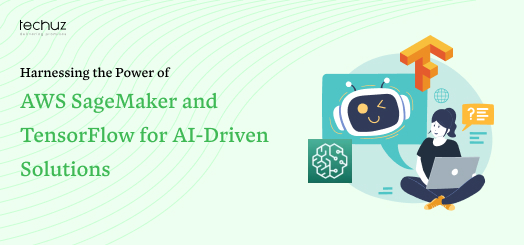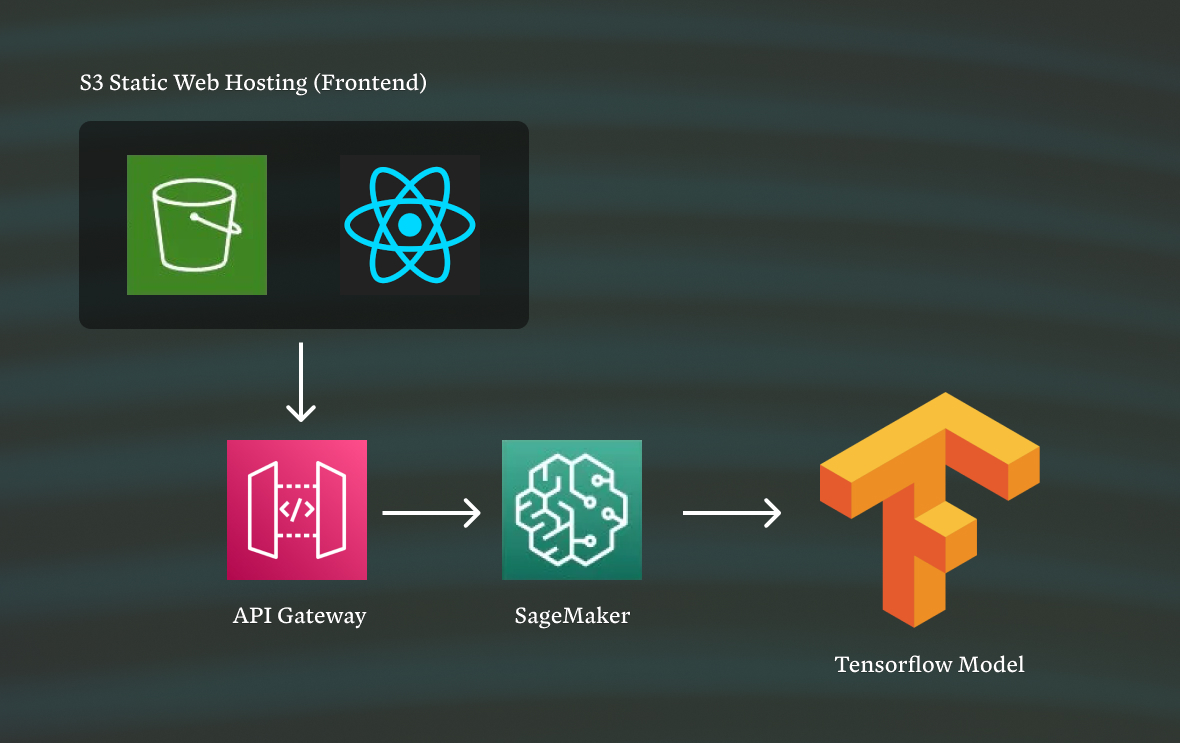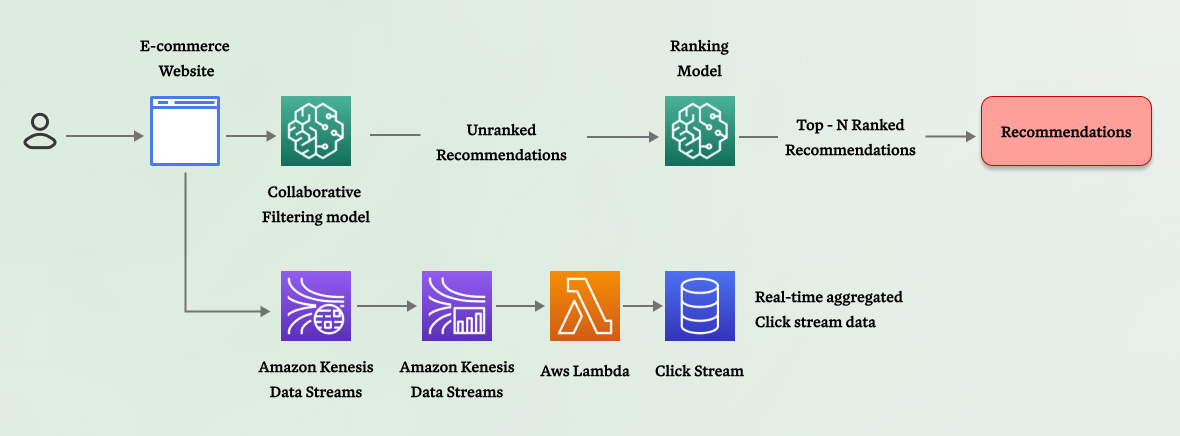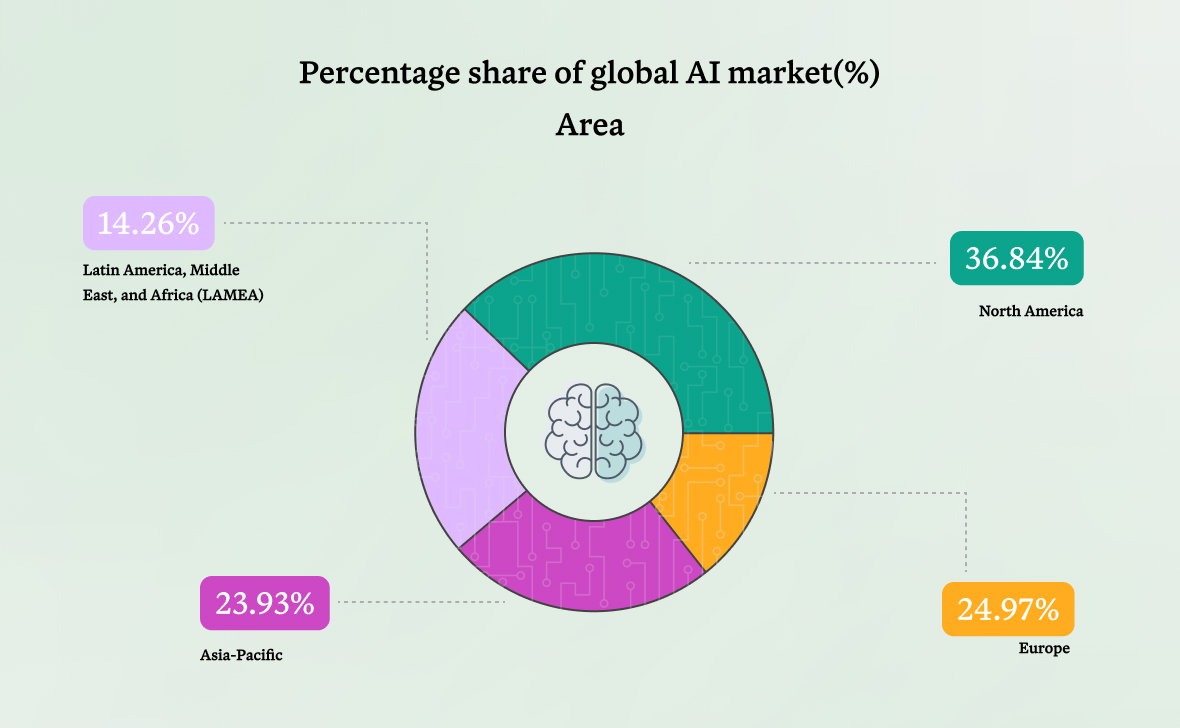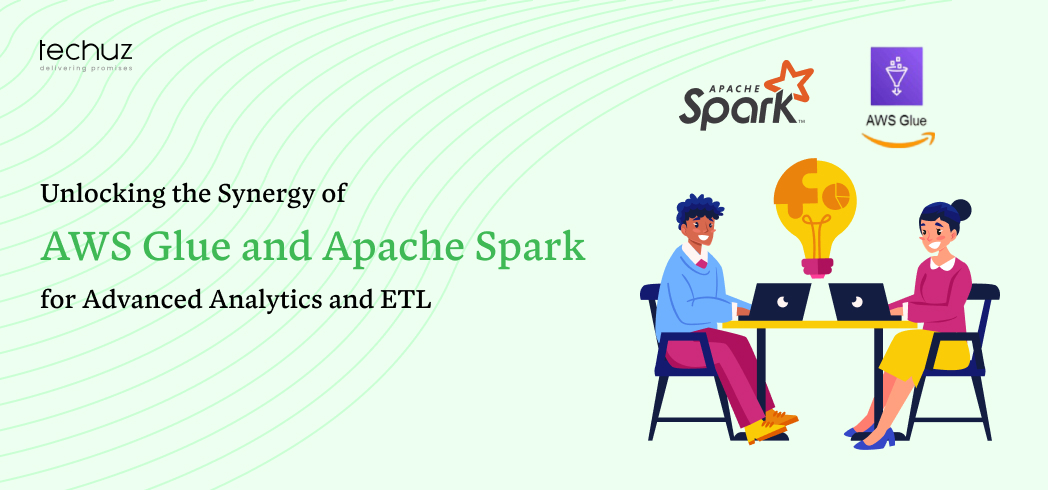Posted on
November 4, 2024
Updated on
November 7, 2024
Read time
 8 mins read
8 mins read
Quick Summary – In this fast-emerging world of artificial intelligence and machine learning, the integration of powerful tools like AWS and TensorFlow opens up new vistas. AWS SageMaker, a fully managed machine learning service provided by Amazon Web Services, with TensorFlow, which is an open-source deep learning framework, turns out to be quite a wholesome combination in model building and training at scale, as well as in deploying machine learning models.
In this blog, we will explore the synergy between AWS SageMaker and TensorFlow; delve into practical use cases; and look at how this combination can be applied by web development company to developing an AI-driven personalized recommendation system for e-commerce platforms.
Table of Content
Understanding AWS SageMaker
AWS SageMaker takes some of the difficulties and frustrations away from the workflow of machine learning for developers and data scientists. It offers a comprehensive suite of tools to help build, train, and deploy machine learning models at higher speeds and much more effectively. With SageMaker, its users are able to do the following:
Build Models: It has an integrated development environment IDE that features Jupyter notebooks, prebuilt algorithms, and one-click training and deployment capabilities. It has a huge set of machine learning frameworks it supports, including TensorFlow, PyTorch, and Apache MXNet.
Train Models: SageMaker automates model training for tasks such as data preprocessing, model tuning, and distributed training across several instances. It offers support for hyperparameter optimization for the fine-tuning of models to optimize performance.
Deploy Models: SageMaker allows the deployment of models to a completely managed environment, with auto-scaling and monitoring out of the box. This allows for seamless integrations of machine learning models into production applications.
Introduction to TensorFlow
TensorFlow is an open-source deep learning library developed by Google. Due to its flexibility, scalability, and large ecosystem, TensorFlow has grown to be one of the most widely used frameworks for both building and training neural networks. Among the main characteristics of TensorFlow lie the following:
It gives access to a comprehensive library together with a set of tools that enable users to build machine learning-based models-from very simple linear regression ones to complicated deep learning architectures such as CNNs and RNNs.
High Performance: TensorFlow was optimized for performance. Therefore, training and inference of the neural networks are quite efficiently executed on both CPU and GPU. It supports distributed training, hence large-scale machine learning tasks can be built using TensorFlow.
Versatility: The architecture of TensorFlow is flexible; it can be executed on everything from mobile devices to edge computing nodes and even across cloud environments like AWS SageMaker.
The Power of the AWS SageMaker + TensorFlow Combination
Together, AWS SageMaker and TensorFlow are some of the most powerful enablers for building and deploying machine learning models. Here’s how they fit together:
Infrastructure Management: SageMaker abstracts the heavy lifting in infrastructure management so that data scientists can focus on model development. It abstracts the grayness for setting up and managing servers, storage, and networking, making it seamless as far as the deployment of TensorFlow models is concerned.
Scalability: The capability of TensorFlow for large-scale neural networks, coupled with SageMaker’s feature of Distributed Training, helps in building models that can be trained on large datasets. Auto-scaling in SageMaker ensures better resource utilization by reducing costs without losing performance.
Integration and Flexibility: TensorFlow works well on top of SageMaker, making it possible for developers to access the depth of deep learning capabilities available with TensorFlow from within the SageMaker ecosystem. This covers a whole range of portfolio machine learning tasks from image recognition to natural language processing to recommendation systems.
Use Case: Building and Deploying a Personalized Recommendation System
The most impressive applications of machine learning are recommendation systems. Recommendation systems analyze user behavior and preferences in order to suggest content that is more personalized in trying to enhance their experience and drive engagement further. With AWS SageMaker combined with TensorFlow, one can note the perfect positioning in creating such systems.
Step 1: Data Collection and Preprocessing
Data gathering and preprocessing is the preliminary step for a recommendation system. Information to be considered while dealing with an e-commerce platform can be user interactions, user purchase history, product information, and ratings. Further, this data will be cleaned, normalized, and transformed into a suitable format for training a machine learning model.
It includes the most common tools for data preprocessing within AWS SageMaker, including Data Wrangler, which can be used to manipulate and transform big datasets. It is also where a custom TensorFlow-based preprocessing pipeline will be implemented to ensure the data is prepared correctly to train the model.
Step 2: Select Algorithm and Train Model
Once the data is prepared, the next steps are model selection and training. Indeed, the TensorFlow recommendation system does have a lot of out-of-the-box models and architectures that anyone can use to solve their problems; they include collaborative filtering, matrix factorization, and deep neural networks.
Using SageMaker, the model will be allowed to train in a distributed environment, utilizing many different instances and GPUs to speed up the training time. In addition, SageMaker supports hyperparameter optimization out of the box that will fine-tune the model for maximum accuracy.
Step 3: Model Deployment
That said, the model has to be deployed into a production environment where recommendations can be made in real time. One-click deployment in SageMaker makes this process straightforward. The model deploys into a completely managed environment that can scale at any moment in time, based on demands.
The flexibility of TensorFlow allows it to seamlessly integrate with SageMaker deployment services where updates can easily be accommodated in line with continuous learning as new data appear.
Step 4: Monitoring and Optimization
This would involve monitoring model performance in case of deployment and adjusting where necessary. In SageMaker, there is full monitoring tracking latency, throughput, and error rates. For deeper analysis, the performance of your model can be analyzed using TensorBoard.
Through the unending process of monitoring and optimization, businesses will make sure effectiveness and relevance are conveyed to the users of the recommendation system.
For a deeper understanding you can refer to this video.
Example Product: AI-Driven Personalized Recommendation System
As an effort to provide a real-life demonstration of the power of the AWS SageMaker+TensorFlow combination, consider the example product – the AI-driven personalized recommendation system for e-commerce. This section is divided into an overview; problem statement; objective statement; endpoints, data, and libraries; model architecture; model training; model deployment; using the API; and summary.
Overview
Everything from electronics to clothes, and even home goods, is sold through this e-commerce platform. The goal is to introduce a recommendation system that suggests certain products to each of the users, bearing in mind the history of items each has viewed or bought.
System Architecture
Data Layer: The system shall collect data on user interactions in the form of clicks, views, and purchases. This collected data will be stored in AWS S3 and will be available to access for both training and inference.
Model Layer: This contains the deep learning model, based on TensorFlow, which is responsible for data analytics and recommendation generation. First, this model will be trained on historical data and then fine-tuned on real-world feedback that comes directly from users in real time.
Deployment Layer: The deployment of the already trained model on AWS SageMaker. This will run in a scalable environment, which will be able to handle millions of requests every day.
User Interface: The recommendations are presented to users via the front end of an e-commerce platform. It interacts with the deployed model using an API.
Advantages
Higher Sales: In this context, personalized recommendation has the potential of showing users to browse and buy more than what was actually needed. This means an increase in sales.
Better User Experience: Personalized recommendations allow users to enjoy shopping even more. Due to this fact, customer satisfaction and their loyalty also increase.
Scalability: Put together, SageMaker and TensorFlow protect the system so that it can scale when users increase without denting performance.
What’s Next? The Future of AI-Driven Personalization
The intersection of AI and personalization is just beginning to unfold, and the future holds even more exciting possibilities. From real-time adaptive systems that learn from every user interaction to hyper-personalized experiences powered by advanced ML algorithms, the potential is limitless. As AWS SageMaker and TensorFlow continue to evolve, businesses that embrace these technologies will be well-positioned to lead the charge in the next era of Global AI emergence. Let’s have a look at the stats of the global AI market!
Conclusion
The combination of AWS SageMaker with TensorFlow forms an excellent combination for machine learning at scale. Be it a personalized recommendation engine, image recognition, or natural language processing, the combination provides you all the ammunition and flexibility to succeed in this fast-paced world of AI.
By leveraging both SageMaker and TensorFlow, it can provide unique abilities in creating innovative AI-driven products that create value for users, hence driving growth. Whether you’re a seasoned data scientist looking to build AI projects or a developer who’s just getting started with machine learning, this combination empowers your work on a robust, scalable platform.
